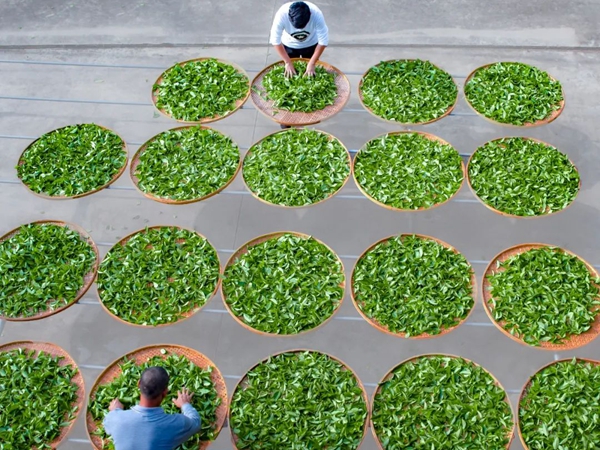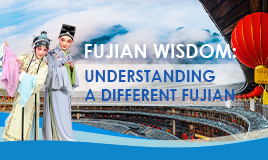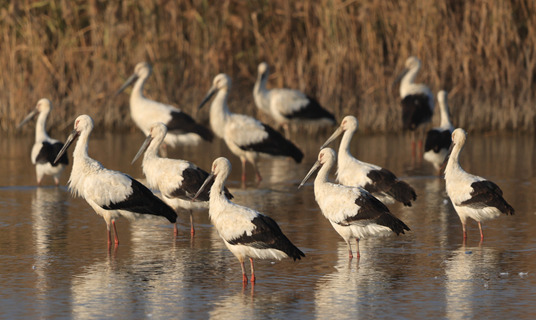Century-old tea making craft thrives in Zhangping

Tea growers dry Shuixian tea in Zhangping, Fujian province. [Photo/Fujian Daily]
Zhangping Shuixian is a rare and unique Fujian oolong tea with a mild taste and sophisticated floral fragrance. The craft of making Zhangping Shuixian Tea, which is specific to Zhangping, Fujian province, has been passed down and developed for over a century. The tea industry is enriching locals' lives and increasing their incomes.
According to historical records, a villager from Zhangping named Liu Yongfa bought Shuixian tea seedlings and grew them in his village at the beginning of the 20th century after visiting the tea planting and processing plantation on Wuyi Mountain. This started the tradition of growing Shuixian tea in Zhangping.
Zhanping Shuixian is one of the few examples of pressed oolong teas. The leaves are wrapped in paper and pressed gently into a wooden mold and then left to dry in the mold. These bundles are excellent for easy transport and trade, and the unique pressing process results in a complex fragrance.
It is unique in that its large leaves and stems are compressed into a small square. Its oxidation level is much lighter than other Shuixian oolong processing methods. This great and rare Shuixian oolong tea is made in the traditional manner and pressed into a small square cube of about 8 grams. This is a famous and traditional method that is specific to Zhangping.
Zhangping boasts an ideal growing environment for Shuixian tea trees, which enables locals to develop the tea making craft and the ever-improving tea quality. The traditional tea processing techniques have been added to the Representative List of the National Intangible Cultural Heritage and UNESCO's Representative List of the Intangible Cultural Heritage of Humanity.




